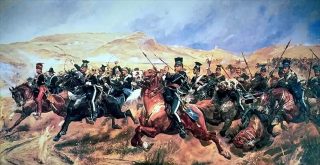In 2015 we celebrated the one-hundred-year anniversary of the publication of Einstein’s General Theory of Relativity. What Einstein was able to achieve was so astounding and so creative, it is worth reflecting on how he did it.
- Thought Experiments. Einstein’s intellectual journey toward the General Theory of Relativity did not begin with complex equations and high level mathematics; rather it started with a simple thought experiment when he was just 16 years old. Young Einstein imagined he was speeding through space, riding alongside a beam of light. The implications of such a ride sparked a curiosity in Einstein that led to the “Miracle Year” of 1905 and the publication of four incredible papers that changed how we understand space and time. And it was another famous thought experiment on riding in an elevator that led, eventually, to his General Theory.
- Question the Status Quo. As Einstein worked through the steps of his thought experiments he often bumped up against what was then considered established theory. For example, in the early 1900s physicist believed there was a mysterious substance they called “ether” that filled space and provided an absolute reference frame. It was also believed that there was a universal clock that kept consistent time across the cosmos. Einstein took almost nothing for granted, always following his intellect and curiosity. He famously rejected the idea of the “ether” as well as the idea of universal time.
- Be an Outsider (or at least Think Like One). As a young man, Einstein’s applications to university were rejected, so he took a job at the Swiss Patent Office in Bern. I have often wondered, had he been admitted directly to university, would he have discovered the General Theory of Relativity? It is quite possible that Einstein would have been so heavily influenced by the traditional thinking of his day that his more radical ideas and theories would have been crushed. Sometimes being outside the establishment can have its advantages. Think of Warren Buffett, perhaps the greatest investor of our time, working from Omaha, safely removed from Wall Street. For Einstein, the Patent Office was a perfect fit. During the day he studied inventions, many of which played a role in developing his ideas about space and time. For example, Einstein studied inventions that dealt with the challenge of synchronizing clocks in train stations, separated by great distances. In addition, Einstein’s job at the patent office afforded him ample time after work to develop his theories and follow his curiosity. Some of his most productive thinking during this time came during long walks after work with Michael Besso, a fellow physicist and his best friend at the Patent Office.
- Keep Things Simple. Einstein attributed much of his success to his ability to filter out non-essential information and focus on what is most important. On keeping things simple, Einstein said, “I soon learned to scent out what was able to lead to fundamentals and to turn aside from everything else, from the multitude of things that clutter up the mind.”



